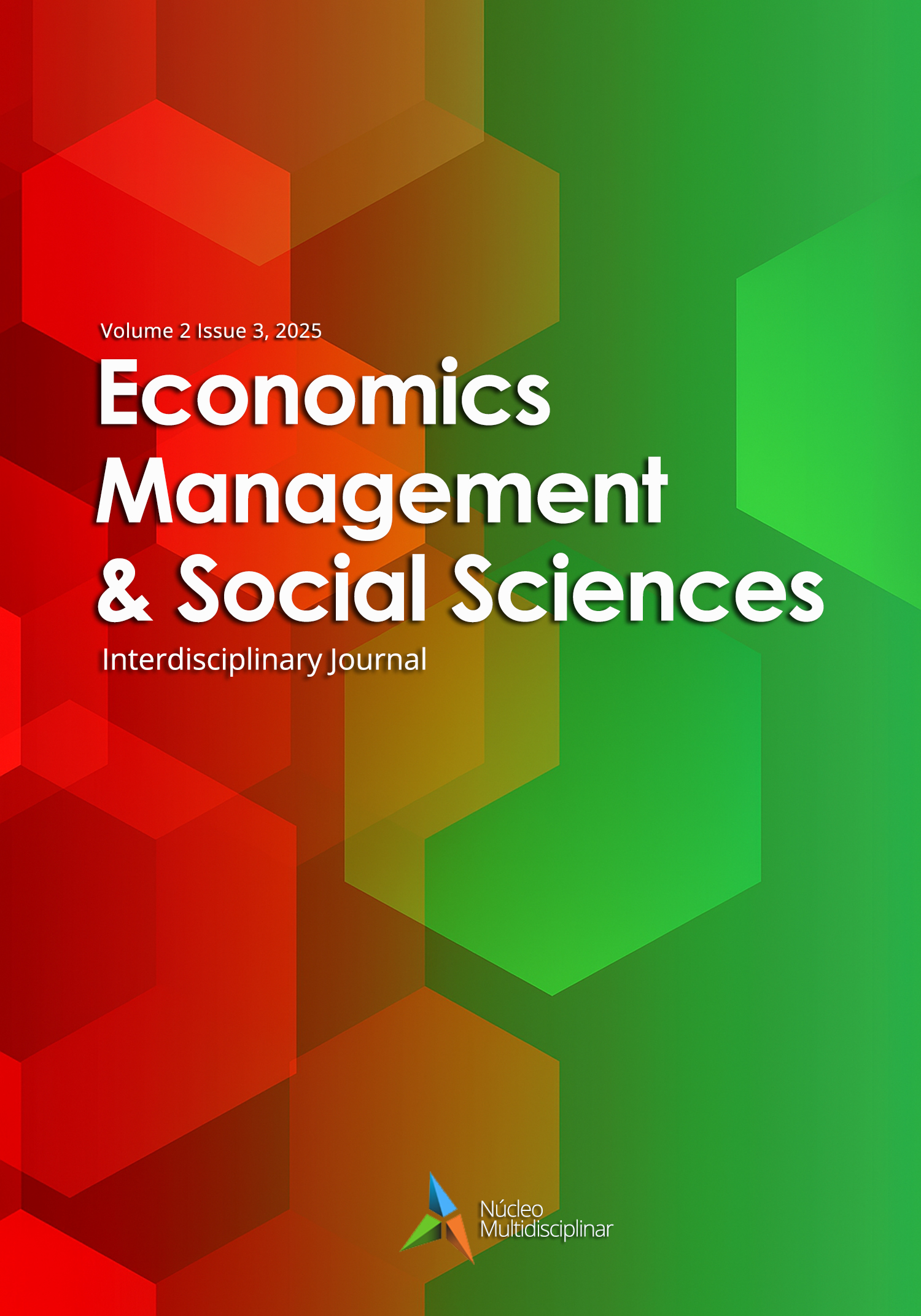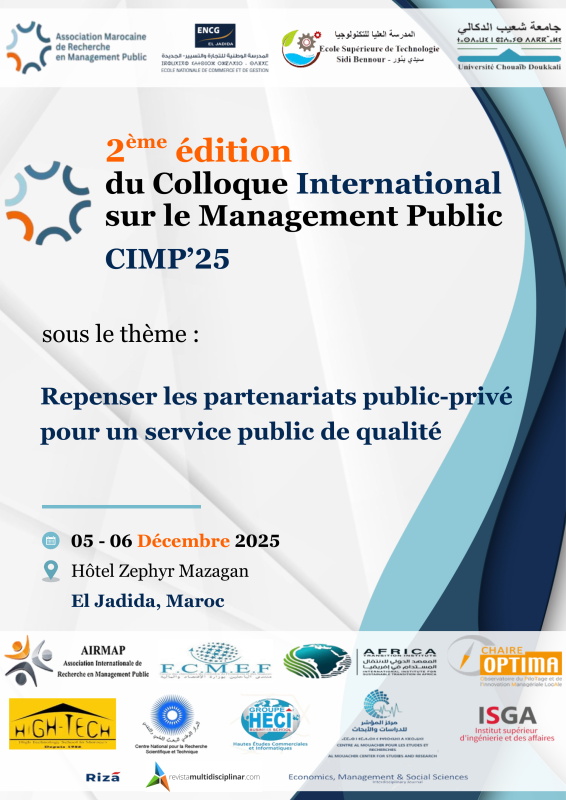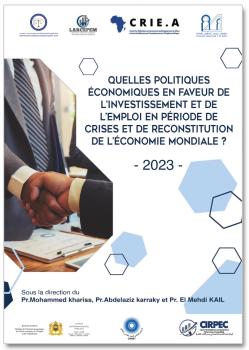Financial inclusion as a catalyst for economic resilience
Insights from Africa
Keywords:
Financial inclusion, Economic resilience, Regional development, Economic growthAbstract
With a focus on African nations, this study examines the contribution of financial inclusion to the strengthen of economic resilience. Through an empirical approach based on macroeconomic data for 12 African countries from 2004 to 2022, it assesses the impact of various financial inclusion indicators, such as the deposit accounts with commercial banks per 1000 adults, the number of commercial bank agencies per 100000 adults, the outstanding deposits with commercial banks (% of GDP), and the outstanding loans from commercial banks (% of GDP), including control variables, on a composite economic resilience index.
The findings demonstrate a significant positive impact of deposit accounts with commercial banks and financial acces (via outstanding deposits and loans) on economies' ability to withstand shocks and recover. However, the number of commercial bank agencies occasionally has ambiguous effects, indicating that physical access alone may not guarantee effective financial inclusion.
Therefore, the study suggests promoting high-quality financial inclusion based on active use, institutional trust, and regulation. It also advocates for incorporating financial inclusion into national resilience strategies as part of an equitable and sustainable development logic.
This study aims to fill the gap in empirical research on the relationship between financial inclusion and economic resilience, focusing on the channel via which financial inclusion strengthens the economic resilience of African nations. It provides a thorough analysis of the relationship using robust economic tools, highlighting the need for further research on the effects of financial inclusion on territorial resilience.
References
Barry Johnston, R., & Sundararajan, V. (1999). Managing Financial Sector Liberalization: An Overview. Sequencing Financial Sector Reforms, 1.
Beck, T., Levine, R., & Loayza, N. (2000). Finance and the Sources of Growth. Journal of financial economics, 58(1-2), 261-300.
Beck, T., Lundberg, M., & Majnoni, G. (2006). Financial intermediary development and growth volatility: do intermediaries dampen or magnify shocks?. Journal of International Money and Finance, 25(7), 1146-1167.
Briguglio, L., Cordina, G., Farrugia, N., & Vella, S. (2006). Conceptualizing and measuring economic resilience. Building the economic resilience of small states, Malta: Islands and Small States Institute of the University of Malta and London: Commonwealth Secretariat, 265-288.
Briguglio, L., Cordina, G., Farrugia, N., & Vella, S. (2014). Economic vulnerability and resilience: concepts and measurements. In Measuring Vulnerability in Developing Countries (pp. 47-65). Routledge.
Carpenter, S., Walker, B., Anderies, J. M., & Abel, N. (2001). From metaphor to measurement: resilience of what to what?. Ecosystems, 4, 765-781.
Davoudi, S., Shaw, K., Haider, L. J., Quinlan, A. E., Peterson, G. D., Wilkinson, C., ... & Davoudi, S. (2012). Resilience: a bridging concept or a dead end?“Reframing” resilience: challenges for planning theory and practice interacting traps: resilience assessment of a pasture management system in Northern Afghanistan urban resilience: what does it mean in planning practice? Resilience as a useful concept for climate change adaptation? The politics of resilience for planning: a cautionary note: edited by Simin Davoudi and Libby Porter. Planning theory & practice, 13(2), 299-333.
De la Escosura, L. P. (2013). Human development in Africa: A long-run perspective. Explorations in Economic History, 50(2), 179-204.
Demirgüç-Kunt, A., Klapper, L. F., & Singer, D. (2013). Financial inclusion and legal discrimination against women: evidence from developing countries. World Bank Policy Research Working Paper, (6416).
Demirgüç-Kunt, A., Klapper, L., Singer, D., & Ansar, S. (2022). The Global Findex Database 2021: Financial inclusion, digital payments, and resilience in the age of COVID-19. World Bank Publications.
European Union (2020), "A Stronger Europe in the World: Resilience of Societies and Territories".
Guérineau, S., & Jacolin, L. (2014). L'inclusion financière en Afrique subsaharienne : faits stylisés et déterminants. Revue d'économie financière, 116(4), 57-80.
Gujarati, D. N., & Porter, D. C. (2009). Causality in economics: The Granger causality test in Basic Econometrics. McGraw-Hill.
Harvey, D. (2005). Spaces of neoliberalization: towards a theory of uneven geographical development (Vol. 8). Franz Steiner Verlag.
Huber, P. J., & Ronchetti, E. M. (1981). Robust statistics, ser. Wiley Ser Probab Math Stat New York, NY, USA Wiley-IEEE, 52, 54.
Levine, R. (1997). Financial development and economic growth: views and agenda. Journal of economic literature, 35(2), 688-726.
Mark, P. (2012). Resilience and transformation. In Climate change and the crisis of capitalism (pp. 51-65). Routledge.
Mehrotra, A. N., & Yetman, J. (2015). Financial inclusion-issues for central banks. BIS Quarterly Review March.
Mushtaq, R., & Bruneau, C. (2019). Microfinance, financial inclusion and ICT: Implications for poverty and inequality. Technology in Society, 59, 101154.
Naceur, S. B., Candelon, B., Elekdag, S., & Emrullahu, D. (2023). Is FinTech Eating the Bank's Lunch?. Journal of International Financial Management & Accounting.
OCDE (2016), "Resilient Cities: Policy Highlights", OCDE Publishing.
Omar, M. A., & Inaba, K. (2020). Does financial inclusion reduce poverty and income inequality in developing countries? A panel data analysis. Journal of economic structures, 9(1), 37.
PNUD (2014), "Building Resilience: Integrating Climate and Disaster Risk into Development".
Rachida, El Yamani. Does Financial innovation improve Financial Inclusion in African countries. Journal of Sustainable Development and Green Technology, 2023, vol. 1, no 1, p. 08-18.
Raddatz, C. (2006). Liquidity needs and vulnerability to financial underdevelopment. Journal of financial economics, 80(3), 677-722.
Sahay, M. R., Cihak, M., N'Diaye, M. P., Barajas, M. A., Mitra, M. S., Kyobe, M. A., ... & Yousefi, M. R. (2015). Financial inclusion: can it meet multiple macroeconomic goals?. International Monetary Fund.
Sarma, M. (2008). Index of financial inclusion (No. 215). Working paper.
Wooldridge, J. M. (2010). Econometric analysis of cross section and panel data. MIT press.
Published
How to Cite
Issue
Section
License
Copyright (c) 2025 RACHIDA EL YAMANI, Doha TALKHOUKHET

This work is licensed under a Creative Commons Attribution-NonCommercial 4.0 International License.







